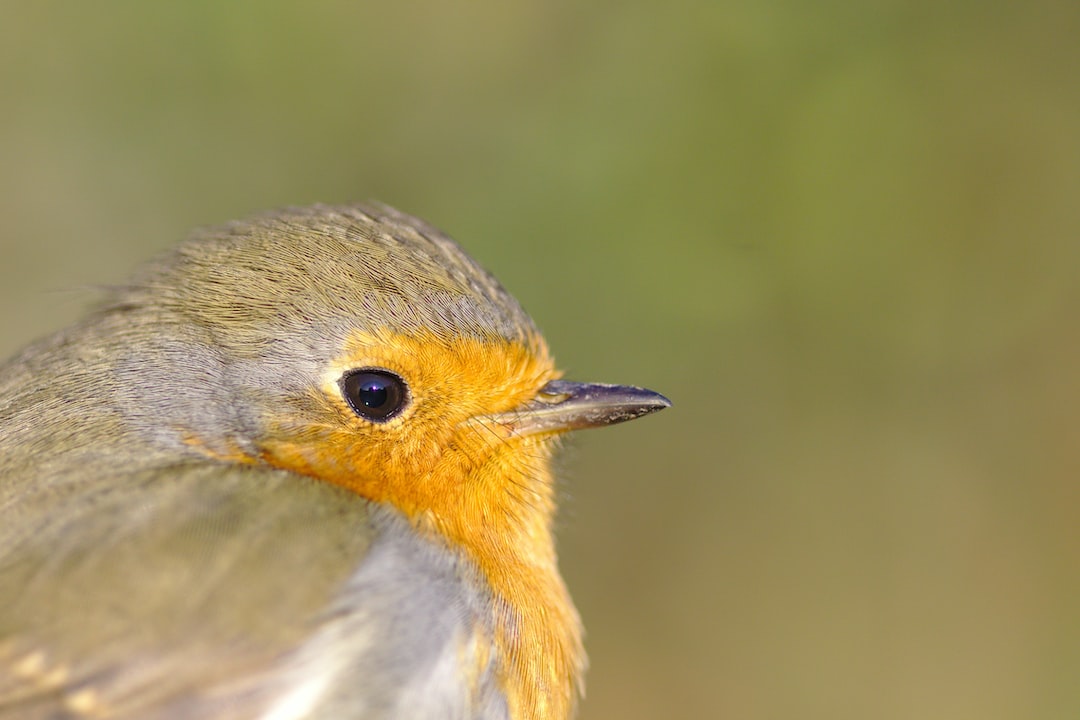Eliminating Crawdads from Your Yard: Effective Tips and Tricks

Crawdads, also known as crayfish or freshwater lobsters, are crustaceans that are commonly found in bodies of freshwater such as rivers, streams, and ponds. They are known for their distinctive appearance, with a hard exoskeleton and a pair of large pincers. Crawdads play an important role in the ecosystem as they help to clean up decaying organic matter and serve as a food source for other animals.
In their natural habitat, crawdads can be found burrowing into the muddy bottoms of bodies of water. They create complex tunnel systems that provide them with shelter and protection. These tunnels can extend several feet into the ground and have multiple entrances and exits. Crawdads are most active during the night and are known to be opportunistic feeders, consuming both plant matter and small animals.
Key Takeaways
- Crawdads are freshwater crustaceans that live in streams, rivers, and other bodies of water.
- Crawdads can become a problem in your yard if they burrow into the soil and damage plants, lawns, and irrigation systems.
- Signs of a crawdad infestation in your yard include holes in the ground, damaged plants, and muddy water.
- Prevention methods for crawdad infestations include removing standing water, sealing cracks in foundations, and using physical barriers.
- Natural crawdad repellents for your yard include planting certain herbs and using vinegar or citrus sprays.
Why Crawdads Can Be a Problem in Your Yard
While crawdads are beneficial in their natural habitat, they can become a problem when they invade your yard. One of the main issues with crawdads in yards is the damage they can cause to lawns and gardens. Crawdads are known to dig extensive burrows in search of food and shelter, which can result in unsightly mounds of dirt on your lawn. These burrows can also disrupt the root systems of plants, leading to wilting or even death.
In addition to the physical damage they can cause, crawdad infestations can also pose health risks. Crawdads are carriers of various parasites and bacteria that can be harmful to humans and pets. If you come into contact with contaminated water or soil where crawdads have been present, you may be at risk of contracting diseases such as giardiasis or leptospirosis.
Identifying Crawdad Infestations in Your Yard
To effectively deal with a crawdad infestation, it is important to be able to identify the signs of their activity in your yard. One of the most obvious signs is the presence of small mounds of dirt on your lawn or garden. These mounds are created as crawdads dig their burrows and can be a clear indication that you have a problem.
Another sign to look out for is damage to plants. Crawdads may feed on the roots of plants, causing them to wilt or die. If you notice plants in your yard that are not thriving despite proper care, it may be worth investigating whether crawdads are the culprit.
Crawdads are also known to congregate in certain areas. They prefer areas with moist soil and access to water, so check around ponds, streams, or areas with poor drainage. Look for signs of burrows or tracks leading to and from these areas.
Prevention Methods for Crawdad Infestations
| Prevention Method | Description | Effectiveness |
|---|---|---|
| Physical Barriers | Installation of mesh or screens to prevent crawdads from entering water systems | High |
| Chemical Treatments | Application of pesticides or herbicides to eliminate crawdad populations | Moderate |
| Biological Control | Introduction of natural predators or competitors to reduce crawdad populations | Low |
| Education and Outreach | Informing the public about the risks of crawdad infestations and how to prevent them | Low |
Preventing crawdads from entering your yard in the first place is the best way to avoid dealing with an infestation. One effective strategy is to create a physical barrier around your yard. This can be done by installing a fence or using landscaping materials such as rocks or gravel to create a barrier that crawdads cannot easily cross.
Another prevention method is to make your yard less hospitable to crawdads. Crawdads are attracted to moist soil, so improving drainage in your yard can help deter them. Ensure that gutters and downspouts are directing water away from your yard and consider adding additional drainage systems if necessary.
Removing any potential food sources can also help prevent crawdads from being attracted to your yard. Keep your lawn well-maintained and remove any decaying organic matter such as fallen leaves or dead plants.
Natural Crawdad Repellents for Your Yard
If you prefer to use natural methods to deter crawdads from your yard, there are several options available. One common natural repellent is the use of garlic. Crawdads are repelled by the strong smell of garlic, so planting garlic around your yard or using garlic-based sprays can help keep them away.
Another natural repellent is the use of predator urine. Crawdads are wary of predators and the scent of predator urine can deter them from entering your yard. You can purchase predator urine from garden supply stores or online and apply it around the perimeter of your yard.
Additionally, some homeowners have had success using hot pepper sprays or solutions made from vinegar and water to repel crawdads. These substances can be sprayed directly onto plants or around the perimeter of your yard to create a barrier that crawdads will avoid.
Chemical Crawdad Control Options

If natural repellents are not effective in controlling a crawdad infestation, there are chemical options available. One common chemical control method is the use of pesticides. Pesticides specifically formulated for crawdad control can be applied to affected areas to kill or repel crawdads.
However, it is important to note that the use of pesticides can have negative impacts on the environment and other organisms in your yard. Care should be taken to follow the instructions provided by the manufacturer and to use pesticides responsibly.
Trapping and Removing Crawdads from Your Yard
Trapping and removing crawdads from your yard can be an effective way to control an infestation. There are several types of traps available that are specifically designed for catching crawdads. These traps typically consist of a baited container with openings that allow crawdads to enter but not escape.
To trap crawdads, place the traps in areas where you have observed signs of their activity, such as near burrows or in areas with high moisture levels. Bait the traps with food that crawdads are attracted to, such as fish or meat. Check the traps regularly and remove any captured crawdads.
When removing crawdads from your yard, it is important to do so in a humane manner. Avoid causing unnecessary harm or stress to the crawdads and release them in a suitable location away from your property.
Maintaining a Crawdad-Free Yard: Regular Maintenance Tips
Once you have successfully eliminated a crawdad infestation, it is important to take steps to maintain a crawdad-free yard in the long term. Regular maintenance and upkeep can help prevent future infestations.
One important maintenance tip is to regularly inspect your yard for signs of crawdad activity. Check for new mounds of dirt or damage to plants and take action immediately if you suspect a new infestation.
Maintaining proper drainage in your yard is also crucial. Ensure that gutters and downspouts are clear of debris and directing water away from your yard. Consider installing additional drainage systems if necessary to prevent water from pooling in your yard.
Regularly removing decaying organic matter such as fallen leaves or dead plants can also help prevent crawdads from being attracted to your yard. Keep your lawn well-maintained and remove any potential food sources.
Common Mistakes to Avoid When Eliminating Crawdads
When trying to eliminate crawdads from your yard, there are several common mistakes that homeowners often make. One common mistake is not addressing the underlying cause of the infestation. Simply removing the crawdads without addressing the factors that attracted them in the first place may result in a recurring infestation.
Another mistake is using ineffective or unsafe methods to eliminate crawdads. It is important to use proven methods that are safe for both humans and the environment. Avoid using excessive amounts of pesticides or other chemicals, as this can have negative impacts on the ecosystem.
Finally, it is important to be patient when dealing with a crawdad infestation. Crawdads can be persistent and it may take time to completely eliminate them from your yard. Consistency and regular maintenance are key to achieving long-term success.
Seeking Professional Help for Severe Crawdad Infestations
In some cases, a crawdad infestation may be severe or difficult to control on your own. If you have tried various methods and are still unable to eliminate the infestation, it may be necessary to seek professional help.
Pest control professionals have the knowledge and experience to effectively deal with crawdad infestations. They can assess the severity of the infestation and recommend appropriate treatment methods. They may also have access to specialized equipment or products that are not available to homeowners.
When seeking professional help, it is important to choose a reputable pest control company. Look for companies that are licensed and insured, and ask for references or read online reviews to ensure their credibility.
In conclusion, crawdads can be a nuisance when they invade your yard, causing damage to lawns and gardens and posing potential health risks. However, with proper identification, prevention methods, and control options, you can effectively eliminate crawdad infestations and maintain a crawdad-free yard. Whether you choose natural repellents, chemical control options, or trapping methods, it is important to prioritize the safety of both humans and the environment. Regular maintenance and ongoing vigilance are key to preventing future infestations and enjoying a crawdad-free yard.



